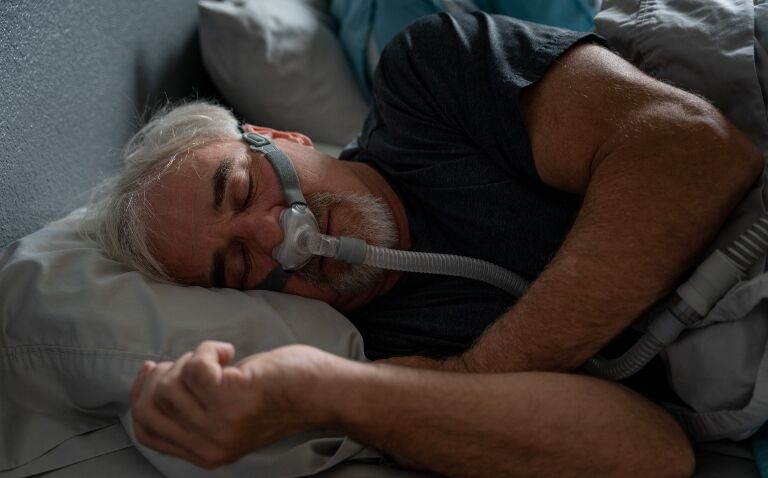NICE has recommended five devices that can be used at home to diagnose and assess the severity of obstructive sleep apnoea/hypopnoea syndrome, freeing up clinician time and helping to reduce waiting lists.
The draft guidance which applies to those over the age of 16 could help the NHS identify people with the condition more easily, NICE said.
More research is needed on the home-testing devices before they can be used in children, the committee added.
Evidence should also be collected on how accurately the devices assess obstructive sleep apnoea in people with black or brown skin, NICE said.
In making the recommendations, the committee said minimal or no help is needed from a healthcare professional to use and attach the devices, which may give a clearer picture because they allow for a more natural night’s sleep.
This contrasts with current systems that have multiple wires and a cannula inserted into the nose and can require a hospital appointment for the person to be shown how to use them.
These may not be suitable for everyone depending on a person’s comorbidities, the committee noted.
Expert clinical advice provided to NICE suggested that hospital sleep testing capacity has reduced since the pandemic, creating more reliance on home testing as the primary approach to sleep diagnostics.
It is thought around 5% of the population has undiagnosed obstructive sleep apnoea hypopnoea syndrome, which is linked to hypertension, diabetes, stroke and heart disease that can shorten life expectancy.
Two of the devices are strapped to the wrist with sensors attached to the finger and chest, another has a wireless sensor attached to the throat. One of the devices is worn as a belt around the waist whilst the last one uses a wireless sensor attached to the finger to detect symptoms using oxygen saturation, body movement and pulse rate.
Some devices require internet and smartphone compatibility, but for others the data is downloaded after the designated monitoring period.
Mark Chapman, director of the Health Technologies Programme at NICE, said: ‘Having obstructive sleep apnoea can cause serious health issues which could be managed if diagnosed and treated.
‘Many people don’t even know they have this condition which is why it is important to be able to receive a diagnosis quickly and efficiently.
‘It is promising that some of the new devices could have the potential to further improve detection of sleep apnoea for people with black or brown skin, but further evidence is needed to show this.’
He added: ‘Another added benefit to these new devices includes the fact they are less invasive, more comfortable to wear, and could cut waiting times because they are easier to use, thus speeding up diagnosis and freeing up clinician time.’
The recommendations are out for consultation until 5 June, with an expected publication date of 11 September 2024.
A version of this article was originally published by our sister publication Pulse.










